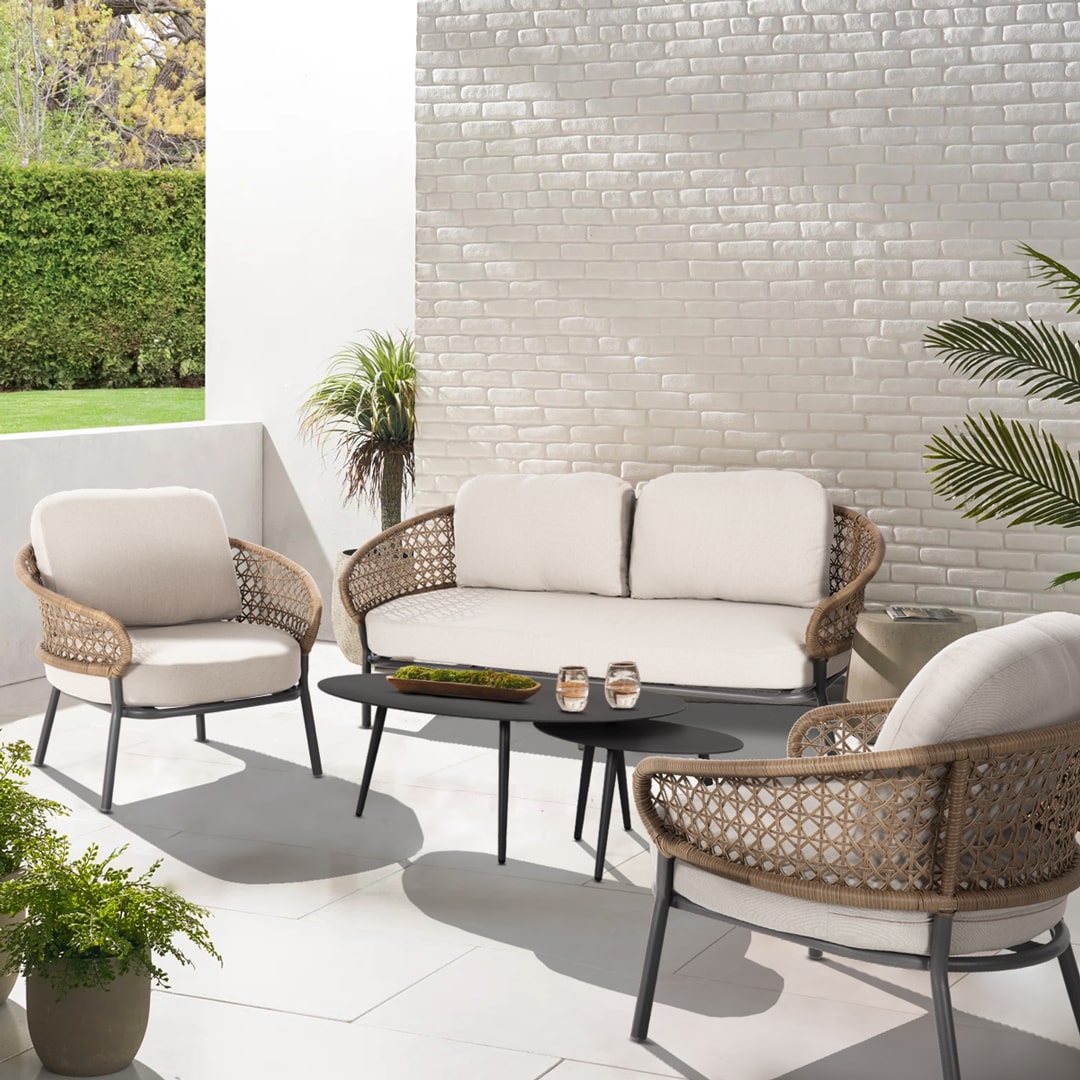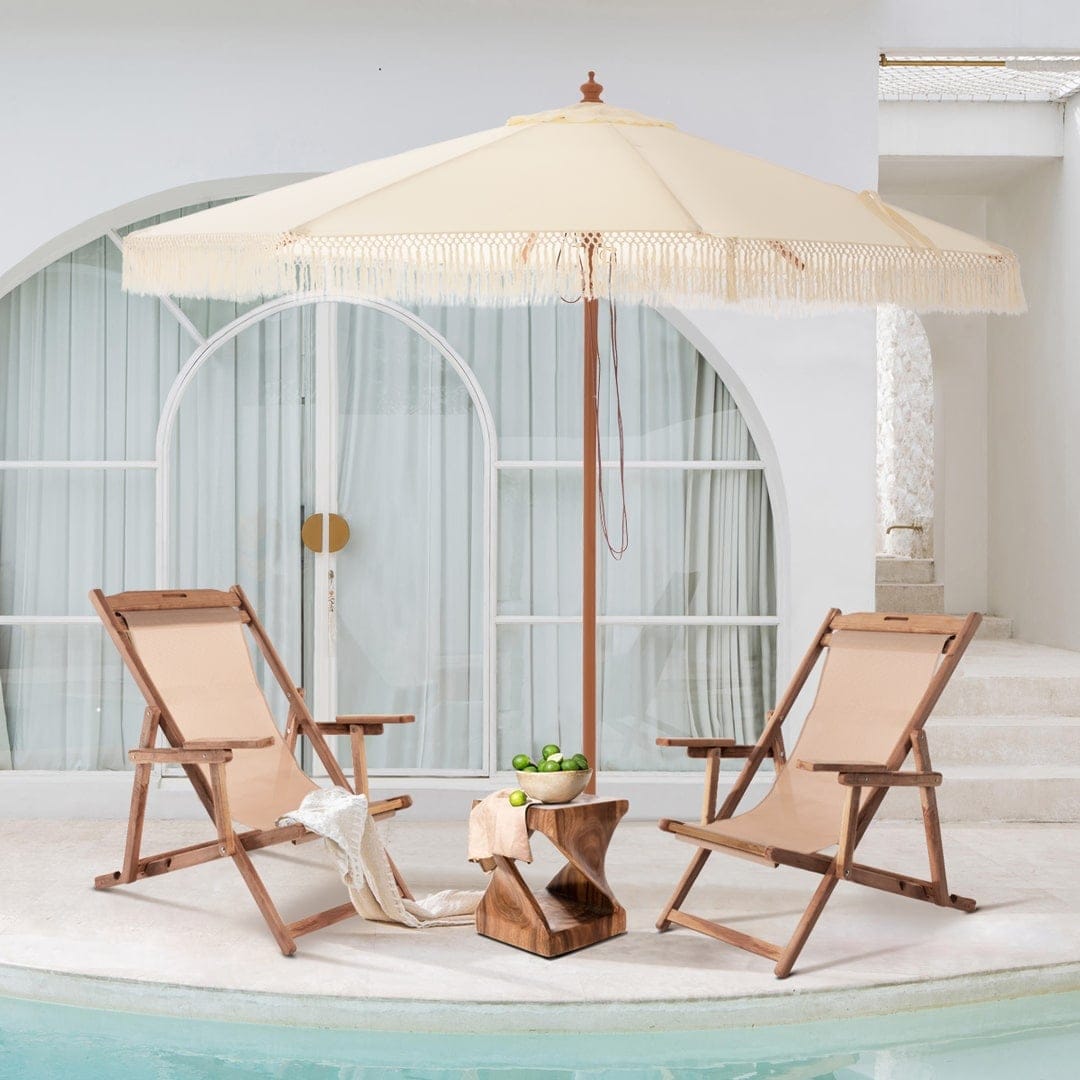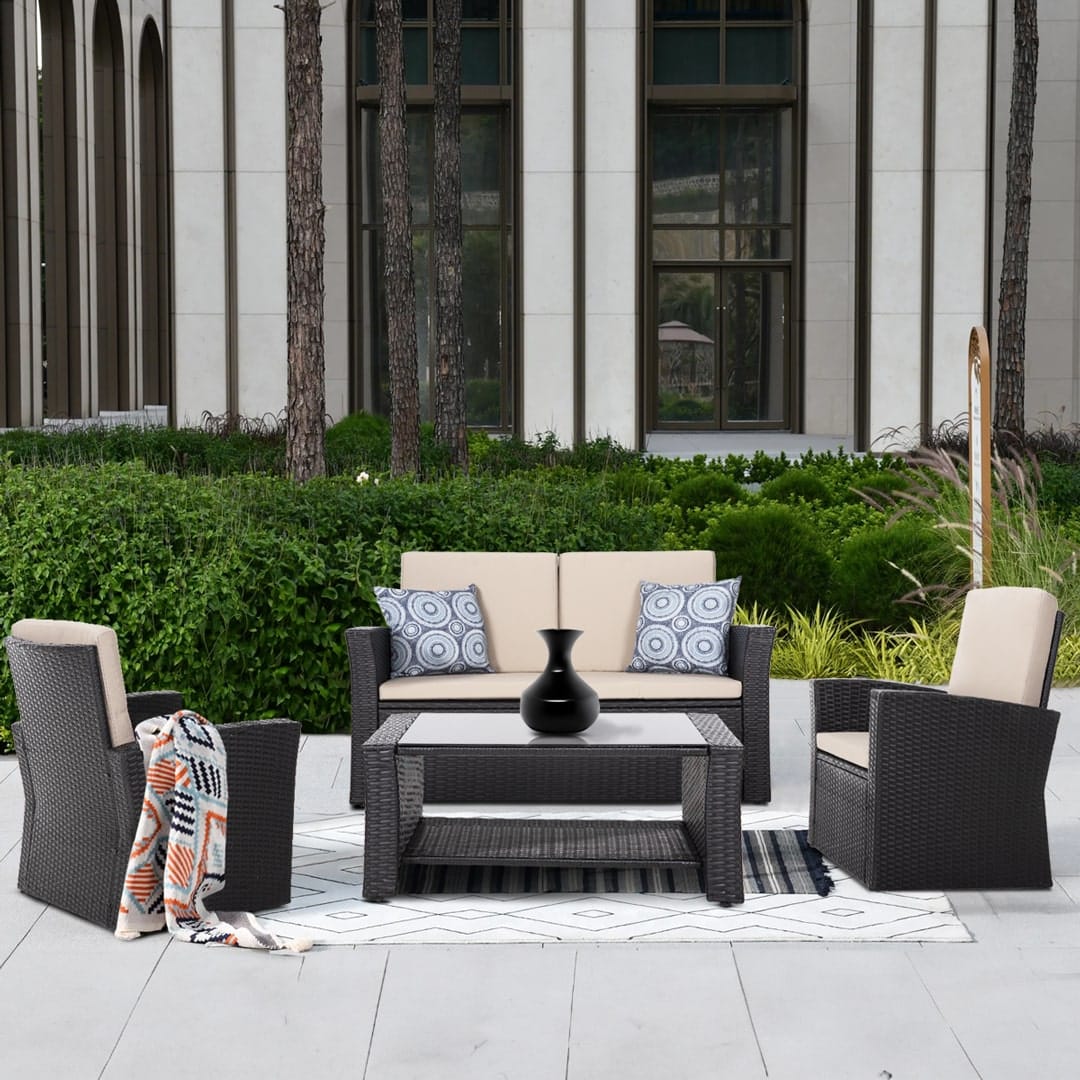Rattan, wicker, bamboo or cane: What’s the difference?

Every summer we often hear words like rattan, wicker, bamboo or cane, especially when it comes to outdoor furniture.
Most people, of course, consider all these words to be the same and use them interchangeably.
However, the truth is that rattan, bamboo, wicker and cane are different things and should not be confused.
That’s why in today’s article we will explain what each of them is and what their differences are, so you can be sure that you will make the best choice for your garden, yard or terrace.
So let’s get started!
What is rattan?
First of all, let’s see what rattan is.
Rattan belongs to the palm family, resembles the reed and is found mainly in the tropical regions of Southeast Asia (especially in Indonesia but also in Thailand, Vietnam, etc.), but also in some parts of Africa (Ghana, Nigeria, etc.) and Australia.
It is a climbing plant whose branches are long, slender and quite flexible.
It is quite compact, hard, flexible, light but also very durable, which makes it ideal for making outdoor furniture (e.g. rattan armchair, table, sofa, rattan chairs, etc.) and for decoration (e.g. rattan baskets).

See our full collection of outdoor chairs-armchairs.
In addition, rattan has a unique, exotic style. So, if you choose rattan furniture, you’ll give your garden or terrace a stylish and cosy feel.
However, natural rattan can prove susceptible to long-term exposure to adverse weather conditions (sun, high humidity, rain) and can fade over time.
Also, rattan requires regular maintenance to ensure its longevity and is somewhat more expensive than other similar materials.
What is bamboo?
And since we’ve seen what a material rattan is, now it’s time to find out everything we need to know about its main competitor in the construction of outdoor furniture.
So what is bamboo?
It’s a plant (by the way, it looks like rattan) that grows mainly in regions with tropical and subtropical climates, particularly in Asia (India, China, Indonesia, Thailand, Japan), Africa (Nigeria, Ghana, etc.) and South America (Brazil, Peru, etc.).
Bamboo is considered a type of grass, although at full growth it resembles a normal tree. Given that it grows rapidly, it is considered one of the most renewable sources of natural materials for furniture making.

See our full collection of outdoor dining tables and dining room sets.
Bamboo is known for its hardness and enormous durability, and, unlike rattan, it is not as flexible.
Bamboo furniture is lightweight and sturdy with great durability, and is characterized by an earthy look that lends a sense of relaxation and serenity to the space.
It’s also a fairly inexpensive material, so if you’re on a tight budget and wondering which is more expensive, bamboo or rattan, now you know which one to choose.
On the other hand, of course, bamboo furniture is sensitive to high humidity (like rattan), so it’s a good idea to protect it (e.g. with covers or by placing it in covered areas).
Read also: Which is the best type of wood for furniture?
What is cane?
The comparison between rattan, bamboo, wicker and cane continues with cane.
Cane is a material that also comes from the rattan plant. But what is the difference between it and the rattan material seen above?
The rattan material is essentially the core of the plant, while the cane comes from the outer bark or skin of the core.
After processing, the cane is turned into thin strips that are smooth and shiny, and are also quite flexible, unlike the harder and more rigid rattan.

See our extensive collection of garden sofas.
These thin strips are mainly used to bind the furniture parts together and also to create the final details of the furniture.
Think for example of the woven chairs (and especially the backs or seats) that you usually see in gardens or terraces and you will understand.
Apart from chairs, armchairs, tables, etc., very typical objects made of this material are cane baskets.
Cane is economical, lightweight, and, unlike rattan, is quite resistant to rain and moisture, although direct and long-term exposure to sunlight can cause it to fade.
In addition, it is used for striking details and can provide beautiful and exciting furniture in terms of aesthetics, creating an earthy, rustic and warm space.
Read also: Custom furniture: 4+1 Unique benefits!
What is wicker?
And now it’s time to talk about wicker. What material is this?
Contrary to what we have seen so far, wicker is not a material but refers to the weaving technique used to make furniture, which can be made of rattan, bamboo, cane or other synthetic materials.
So, if you come across the phrase “wicker furniture” somewhere, remember that we are not talking about a material but about the technique of making it.

See our extensive collection of outdoor living room sets.
This technique is known for the strength and durability of the furniture that is created, but mainly for the excellent aesthetics that they can give to a space.
The captivating and intricate patterns, the “imperfection” that reminds at all times that they are handmade, the special texture, the natural, earthy colour and the airy and “open” feeling they leave can really make a difference in terms of appearance and style.
Rattan vs bamboo vs cane vs wicker – Summary
So we have seen what the main differences between rattan, bamboo, cane and wicker are. So now you know what to look for when choosing material for your outdoor furniture for your home.
Each material has its own pros and cons, so your final decision will be based on your personal needs and preferences.
Apart from our outdoor furniture, at Alexandros Furniture you will also find top quality handmade living rooms-sofas, as well as luxurious and elegant dining room sets, so you can fully equip the interiors of your home!
If you are planning to furnish from scratch or renovate your home, find now in our store the best furniture in Thessaloniki and everywhere in Greece and Cyprus!
Remember that at Alexandros Furniture you have the possibility to order special furniture designs, depending on your needs and preferences, while we also offer:
- Free space assessment
- Payment in 60 installments
- Free shipping (in the extended area of Thessaloniki and in many areas in the province